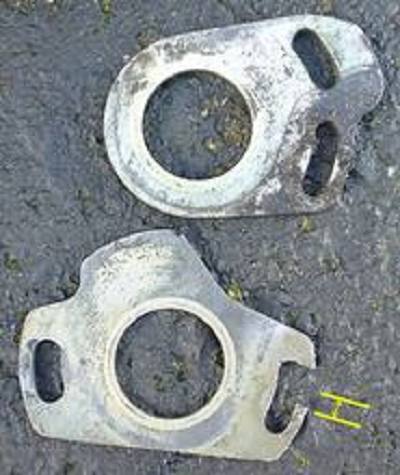| Revision as of 05:52, 17 June 2011 ddgonzal (Talk | contribs) (->Overview) <- Previous diff |
Revision as of 05:57, 10 January 2012 ddgonzal (Talk | contribs) Next diff -> |
||
| Line 1: | Line 1: | ||
| - | Do you want to fit the distributor into an early A10 or A12 engine? Or a later A12/A14/A15? The fit differently and so are not direct bolt-ins. But with simple modifications to the bolt-down bracket will fit each other. | + | [[Category:Engine Electrical System]] |
| + | Do you want to fit the distributor into an early A10 or A12 engine? Or a later A12/A14/A15? The fit differently and so are not direct bolt-ins. But with simple modifications to the bolt-down bracket will fit each other. | ||
| = Overview = | = Overview = | ||
Revision as of 05:57, 10 January 2012
Do you want to fit the distributor into an early A10 or A12 engine? Or a later A12/A14/A15? The fit differently and so are not direct bolt-ins. But with simple modifications to the bolt-down bracket will fit each other.
Overview
Late engine block have a fastening bolt hole about 5mm further out from the dizzy bore hole. Plus the location and shape of the pad is different.
Early A-series (up to 1973) engines have the distributor-securing bolt hole almost straight forward of the dizzy bore hole.

Late (post-1973) A-series engines the distributor securing bolt to the rear of the dizzy bore hole.

Left: Early A-series plate (slots on opposite sides)

Right: Late A-series plate
- Late style plate: 3 mm thick
- Early style plate: 2 mm thick
Late vs Early A-series distributors

Late Style Advantage
Larger cap -- less chance to crossfire (important in humid climates)

Electronic Ignition is available too in native A-series format.
These are the normal reason one would want to fit a newer A-series dizzy in an older A-series block.
Interchange
Using 1974-up distributor in older (1966-1973) A-series engines is possible by using the distributor plate with a slight modifications to the bolt-down bracket.

![[Datsun 1200 encyclopedia]](/wiki/upload/wiki.png)
